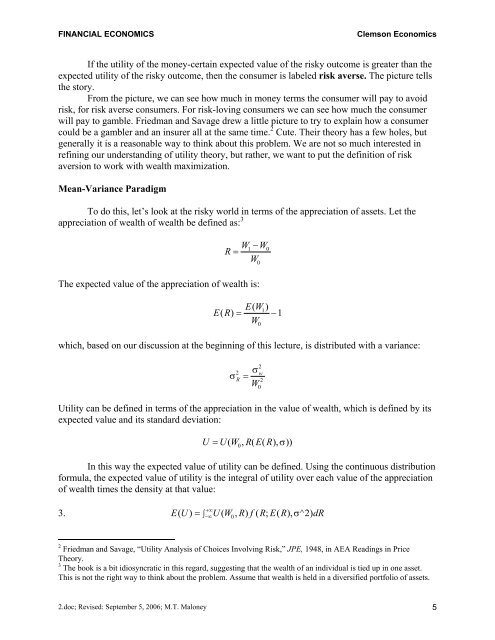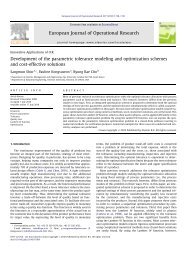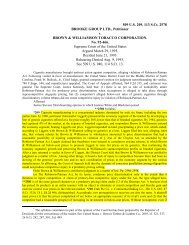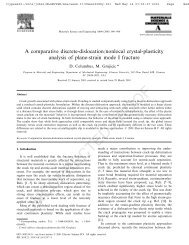Fisher Separation Theorem & Consumer Optimization 1. TWO ...
Fisher Separation Theorem & Consumer Optimization 1. TWO ...
Fisher Separation Theorem & Consumer Optimization 1. TWO ...
Create successful ePaper yourself
Turn your PDF publications into a flip-book with our unique Google optimized e-Paper software.
FINANCIAL ECONOMICS Clemson Economics<br />
If the utility of the money-certain expected value of the risky outcome is greater than the<br />
expected utility of the risky outcome, then the consumer is labeled risk averse. The picture tells<br />
the story.<br />
From the picture, we can see how much in money terms the consumer will pay to avoid<br />
risk, for risk averse consumers. For risk-loving consumers we can see how much the consumer<br />
will pay to gamble. Friedman and Savage drew a little picture to try to explain how a consumer<br />
could be a gambler and an insurer all at the same time. 2 Cute. Their theory has a few holes, but<br />
generally it is a reasonable way to think about this problem. We are not so much interested in<br />
refining our understanding of utility theory, but rather, we want to put the definition of risk<br />
aversion to work with wealth maximization.<br />
Mean-Variance Paradigm<br />
To do this, let’s look at the risky world in terms of the appreciation of assets. Let the<br />
appreciation of wealth of wealth be defined as: 3<br />
W −W<br />
R =<br />
W<br />
1 0<br />
The expected value of the appreciation of wealth is:<br />
EW ( 1)<br />
E( R)<br />
= −1<br />
W<br />
which, based on our discussion at the beginning of this lecture, is distributed with a variance:<br />
σ<br />
2<br />
R<br />
0<br />
0<br />
σ<br />
=<br />
W<br />
Utility can be defined in terms of the appreciation in the value of wealth, which is defined by its<br />
expected value and its standard deviation:<br />
2<br />
w<br />
2<br />
0<br />
U = U( W , R( E( R),<br />
σ ) )<br />
0<br />
In this way the expected value of utility can be defined. Using the continuous distribution<br />
formula, the expected value of utility is the integral of utility over each value of the appreciation<br />
of wealth times the density at that value:<br />
= z−∞ 0 2<br />
+∞<br />
3. EU ( ) UW ( , R) f( RER ; ( ), σ ^ ) dR<br />
2<br />
Friedman and Savage, “Utility Analysis of Choices Involving Risk,” JPE, 1948, in AEA Readings in Price<br />
Theory.<br />
3<br />
The book is a bit idiosyncratic in this regard, suggesting that the wealth of an individual is tied up in one asset.<br />
This is not the right way to think about the problem. Assume that wealth is held in a diversified portfolio of assets.<br />
2.doc; Revised: September 5, 2006; M.T. Maloney 5
















